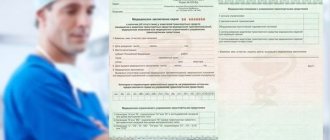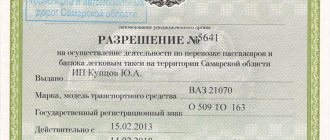- Amount of the fine and who must pay it
- In what cases is it considered that there is an extra passenger in the car?
- How to understand how many people can be transported in a car
- What are the dangers of carrying extra passengers?
- Examples of people overloading cars
- Tips on how to avoid overloading your car
If during a trip there are more people in a car than its technical characteristics allow, this is contrary to traffic regulations and is punishable by law. Violation is subject to administrative liability in accordance with Article No. 12.23 of the Administrative Code. In such cases, traffic police officers have the right to issue a fine for an extra passenger, as well as for several other points.
Amount of the fine and who must pay it
According to traffic rules, it is not allowed to transport people if their number exceeds the number of seats in the car. So, if a traffic police officer notices four passengers in the back seat of a car, he must issue a fine for the violation. Carrying an extra person will cost the driver 500 rubles (Article of the Administrative Code 12.23, clause 1).
But the total amount of penalties may be much higher. Previously, drivers paid only for the most “expensive” offense, but now the amounts of all penalties are added up if two or more violations are committed (Part 1 of Article 4.4 of the Administrative Code).
If there is an extra passenger in the car, then he lacks a seat belt. This is a separate offense, which is added to the main one and is assessed at 1000 rubles (Article 12.6 of the Administrative Code).
Sometimes in road practice there are fans of extreme trips when people are outside the cabin. For such dangerous movement, a third fine of 1,000 rubles is added to all of the above (Article 12.23 of the Administrative Code, Part 2).
All of the listed sanctions are imposed on the driver, since he is responsible for the life and health of his passengers. In addition, the unbelted passenger will also pay a fine, because violates clause 5.1 of the traffic rules, which obliges those in the car to use seat belts. The penalty will be 500 rubles (Part 1 of Article 12.29 of the Code of Administrative Offenses of the Russian Federation).
Penalties for excess passengers
A fine for carrying extra people in a car is charged to the driver. In accordance with Art. 12.23 of the Administrative Code, its amount is fixed and is 500 rubles in the case of a passenger car. If we are talking about transporting people in excess of the limit provided for in the registration certificate, on a motorcycle, in a cargo van, etc. you will have to pay a fine of 1000 rubles.
The size of the fine is not affected by whether the cars had one extra passenger or more.
The excess passenger will not be wearing a seat belt. And this also applies to traffic violations and is fraught with a fine of 1000 rubles.
Fine for transporting people outside the cabin
Here we are talking about both passengers who did not find a place in the cabin, and about those who found themselves outside the cabin due to the desire for thrills. Riding a passenger in the trunk or on any other part of the car is punishable by a fine of 1,000 rubles. In this case, we can also talk about transporting an extra passenger, but since the place where he is located is incorrect and extremely unsafe, the amount increases.
The presence of extra passengers in the car threatens not only a fine, but also unpleasant situations on the roads and even serious accidents. It is better not to tempt fate and use the car only in the manner recommended by the manufacturer to ensure your own safety.
In what cases is it considered that there is an extra passenger in the car?
If there are more than 5 people in the car, then for an ordinary passenger car this is a violation of the rules. According to the traffic rules (clause 22.8), it is allowed to transport the number of people provided for by the technical characteristics of the vehicle. For a standard passenger car, this is five people, including the driver.
Even more stringent requirements are imposed on trucks, since violations threaten more serious consequences and can lead to the death of a large number of people on the road. Passengers can be transported in the cabin depending on the number of seats. It is allowed to put people in the back only if the requirements of clause 22 of the traffic rules are met. Otherwise, the fine will be 1000 rubles (Article 12.23 of the Code of Administrative Offenses of the Russian Federation, Part 2). The amount is fixed and does not change depending on the number of passengers.
A driver transporting people in the back of a truck will not be fined if all the following conditions are met (clause 22 of the traffic rules):
- the person driving has a driver’s license for the right to drive a category “C” or “C1” vehicle for at least 3 years;
- when transporting 8-16 people (including passengers in the cabin), a driver’s license for the right to drive a category “D” or “D1” vehicle is required;
- in case of transportation of more than 16 people, category “D” is required;
- the number of people transported cannot exceed the number of seats;
- the machine must be in good working order;
- a flatbed truck must be equipped with seats installed at a height of 30-50 cm from the floor and at least 30 cm from the top edge of the side.
- seats located along the rear or side boards must have reliable backs;
- Transporting children in the back is prohibited.
Depending on its technical capabilities, a bus has a certain number of seats and standing places. Information about this is posted in the salon. But there are situations when each passenger must be provided with a separate seat (clause 22.3 of the traffic rules). The rule applies:
- for intercity transportation;
- when driving in mountainous areas;
- when the bus is used to transport tourists and conduct excursions;
- when transporting children.
If the bus does not fall into these categories, then passengers can occupy standing places, but their number is also strictly regulated.
Legal basis
The regulatory framework regarding the permissible number of passengers is set out in detail in Chapter 22 of the Traffic Regulations of the Russian Federation:
- Paragraph 8 indicates that traffic rules impose a ban on the carriage of passengers if their number exceeds the established limit in a particular vehicle. Since the permissible number of seats depends on the design of the car, the owner is obliged to personally monitor the location of all passengers in the cabin.
- Paragraph 3 provides a clear definition that if the number of vehicle passengers when traveling on any intercity, mountain, tourist, excursion or other passenger route, as well as during the organized transportation of children in buses and minibuses, exceeds the original number of seats, this is a violation. In other words, no standing room is allowed on these trips.
- If a passenger car has only five seats with seat belts, then only five people, including the driver, can ride in it. The sixth person will be considered an extra passenger, even if it is a small child sitting on the lap of an adult.
How to understand how many people can be transported in a car
To determine the correct transportation of people, you should be guided by the following requirements.
- Passengers must be in the passenger compartment or in the back if there are equipped seats.
- If the car has seat belts not only in the front seats, but also in the rear seats, then each passenger must be fastened.
- Children under 12 years of age, in accordance with clause 22.9 of the traffic rules, are transported using seat belts (only from 7 years old), or specialized restraint devices that correspond to their weight and height, or other devices that allow the child to be fastened with seat belts.
- The number of people must comply with the technical regulations for a particular vehicle (some models belong to category B, but allow up to 7 people to be transported without violating the rules).
Many car models that are now noticeably outdated did not leave the factory equipped with seat belts in the rear seats. In this case, traffic police officers have no right to hold accountable for an unbelted passenger.
The driver is prohibited from transporting people in a trailer of any configuration, outside the passenger car (in the trunk, on the roof, on the hood), or in a towed car.
What is the fine for overloading passengers?
The type and amount of penalties for overloading are determined depending on the type of vehicle and the consequences of violating the established operating rules.
In a car
The fine for overloading individuals in a passenger car in 2021 is punishable in accordance with Article 12.23 of the Code of Administrative Offenses:
| A fine of 500 rubles | if the basic rules of transportation are violated, that is, more people are transported in a passenger car than there are seats. Moreover, the amount of the fine does not depend on the number of people transported in excess of the norm, that is, one amount of the administrative fine is provided for one or more extra passengers |
| A fine of 1,000 rubles | if people are transported outside the vehicle (on the hood, roof, trunk, etc.). Such an action may lead to more serious harm to the health of passengers and surrounding people. |
| Fine of 3,000 rubles | if children are transported incorrectly in a passenger car. In accordance with the rules, children under 12 years of age can be transported in a car only with the use of special restraints, which, according to technical characteristics, fully correspond to the height and weight of the child |
If a passenger vehicle is equipped with seat belts, then failure to use special devices is punishable under Article 12.6 of the Code of Administrative Offenses with a fine of 1,000 rubles for the driver and 500 rubles for an unbelted passenger.
In a minibus
Responsibility for boarding passengers in excess of the norm in a minibus is also provided for in Article 12.23 of the Code of Administrative Offenses and is punishable by a fine of 500 rubles .
Calculation of damage to road surfaces from overload is given in the article: calculation of damage to road surfaces from overload. Read about the decision to recover for overload here.
In the bus
If passengers are transported by city bus, then the fine, as in previous situations, will be 500 rubles .
Other administrative penalties are provided for when transporting children by bus.
In this situation, fines are much higher and can be imposed not only on the driver, but also on officials responsible for transporting children, as well as legal entities providing a vehicle for transportation or responsible for the correct provision of the service.
The amounts of fines for violating the rules for transporting children are presented in the table:
| Description of the offense | Article of the Administrative Code | Penalties | ||
| For the driver | For an official | For a legal entity | ||
| Violation of basic transportation rules | 12.23 part 3 | 3 000 | 25 000 | 100 000 |
| Organized transportation of groups of children on a bus with technical faults, by a driver without special skills, without a developed and agreed route, without a list | 12.23 part 3 | 3 000 | 25 000 | 100 000 |
| Violation of other requirements established for the transportation of groups of children | 12.23 part 6 | — | 25 000 | 100 000 |
| Improper transportation of children at night | 12.23 part 5 | 5,000 or deprivation of driving license for a period of 4 – 6 months | 50 000 | 200 000 |
In railway transport
Transportation of passengers by rail is carried out in accordance with the Charter approved by Federal Law No. 18.
Each passenger is required to purchase a travel ticket. Boarding passengers without tickets is strictly prohibited.
In this situation, the punishment for a ticketless passenger will be determined in accordance with Article 110 of the railway charter and may amount to:
| 50% | from the transportation tariff for commuter trains |
| 5% | from the tariff when using long-distance trains |
The responsibility of the conductor is determined by the management of the train or Russian Railways independently and may take the form of penalties or dismissal of the employee.
In water
The rules for transporting passengers by water are established by Order No. 140 of the Ministry of Transport.
If the rules ensuring the safety of passenger transportation on water transport are violated, then under Article 11.10 of the Code of Administrative Offenses, fines can be imposed on:
| Individuals | in the amount of 300 – 500 rubles |
| On officials | in the amount of 500 – 1,000 rubles |
For passengers boarding a water vessel without a ticket, responsibility rests with the officials and the captain. The punishment for overloading with passengers is determined by internal documents.
When traveling by air
Transportation of passengers by aircraft is carried out in accordance with the rules approved by Order of the Ministry of Transport No. 82.
Violation of the passenger capacity of the aircraft is punishable in accordance with Article of the Code of Administrative Offenses No. 11.5 part 3.
The ship's commander may be punished:
| Administrative fine | in the amount of 2,000 – 2,500 rubles |
| Deprivation of the right to fly aircraft | for up to 1 year |
What are the dangers of carrying extra passengers?
Exceeding the number of passengers is a risk to their life and health. In Russia, people often do not take road safety seriously enough. Some drivers neglect the rules for transporting people or securing children using special restraints.
But traffic rules are based on sad experience and are written based on the real situation on the road in order to prevent the death of citizens. It is important to remember and understand the following.
- An overcrowded car shifts its center of gravity, which makes maneuvering difficult. This increases the risk of skidding, accidents, and failure of car parts.
- Exceeding the established norm for passengers leads to an increase in braking distance.
- A crowded car takes longer to overtake. Sometimes drivers do not take this fact into account, which causes accidents on the highway.
- Passenger pressure on the rear doors can cause them to open and people to fall onto the road from the moving vehicle.
In addition, overloading passengers harms the car and leads to rapid wear of parts. The car may fail while driving due to excessive load on the rear suspension.
In what cases is it allowed
Are there possible situations in which the driver will not be subject to administrative liability for extra passengers? No.
In accordance with Article 22.8 of the Traffic Rules, the transportation of passengers in excess of the number provided for by the technical characteristics of a certain type of vehicle is strictly prohibited.
Thus, when carrying out passenger transportation, it is necessary to strictly comply with the established rules, including the number of passengers.
Overloading with passengers can result not only in the imposition of administrative penalties, but also in the occurrence of an emergency situation with serious consequences for the life and health of people, as well as damage to the vehicle itself.
The fine for overloading a car trailer is shown in the article: fine for overloading a car. Is it possible to lose your license for overloading a gazelle, see the page.
Find out what the fine is for overloading a truck for legal entities from this information.
Examples of people overloading cars
Typically, an overload situation occurs when people travel on vacation. A common mistake is that the child is not allocated a separate seat. Ignoring the rules of transportation, some believe that 4 passenger seats are intended for adults, and children can be carried.
This is a misconception. According to the rules, each child must be allocated a separate seat in the cabin. Even if four children can easily fit in the back seat, such transportation will be a serious violation (Section 22.9 of the Traffic Regulations).
What does punishment consist of?
When transporting more than five people in a car, the driver, not the passenger, is punished with a fine.
This is interpreted as a disregard for the safety of passengers in the car. A person driving a car will pay at least one and a half thousand rubles, it consists of the following:
- five hundred rubles for the act itself in the form of transporting a sixth person;
- thousands of rubles for the fact that this person was driving without a seat belt fastened, which is simply not physically designed in the vehicle.
A large sanction is provided for the fact that an additional person in the car is a child. The fact is that a sanction is imposed for transporting a baby without a special seat. The number of children does not matter, the fact itself is important.
If the car is not equipped with seat belts, which happens in older models, then traffic police officers have no right to impose a fine. In this case, the rules for the use and operation of the vehicle are not violated.
If other violations of the operation of the vehicle are discovered during the movement, the driver will be issued a fine, and the employee has the right to draw up a report on the deprivation of his driver’s license.











